Qing Dynasty clothing, referring to the costumes & dress of the Qing Dynasty (1636-1912). The Qing Dynasty was the last feudal dynasty in China's history, was a time a time of Manchurian and Chinese cultural fusion, especially costume culture, and at the same time, was the most changed era in China's costume history.

Historical background of Qing dynasty clothing
The Chinese national culture has a long history, with great inclusiveness and absorption, and clothing is with dynastic iterations, historical changes, etc. with different characteristics of the style.
The Qing Dynasty was the last centralized monarchy in Old China established by the Manchu people. After the overthrow of the Ming dynasty, the Qing rulers operated according to the Han form of national power. Measures have been taken in favour of social stability and economic development.
The promotion of the "Change Manchu hairstyle, change the Manchu clothing" policy made the Qing dynasty's costume and Han traditional costume very different, abolished the Ming dynasty's crown, gowns, and all Han costumes, but the Manchu costume at the same time absorbing the textured patterns of Ming Dynasty clothing.
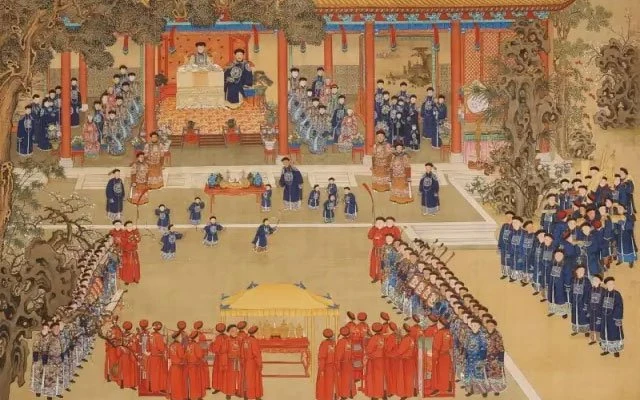
In the Ming Dynasty, men kept their hair in a bun, wore loose clothes, long socks, and shallow shoes; in the Qing Dynasty, they shaved their hair and left it in a braid that hung behind their heads, wearing thin horseshoe sleeve clothing, tight socks, and deep boots.
However, there is a clear distinction between official and civilian dress. The Qing Dynasty was a regime dominated by Manchu rulers, and the customs of the Qi people influenced the vast central plains. Although the style of dress is shaped differently from the way it is worn, orderly society in which the hierarchy of dress is an important means of governance is perhaps impossible for any ruler to reject.
From the whole history of the costume exhibition, the Qing dynasty clothing system is the most complicated in China's costume history, and the rules and regulations are more than any dynasty.
There are regulations for the uniforms, caps, and ornaments of emperors, queens, as well as officials, which vary according to rank, status, occasion, and season. As an integral part of the political system, the crown dress system became an important aspect of the political and cultural life of the Qing Dynasty.
Qing dynasty clothing types
Chaofu (朝服): It is a costume used for major occasions such as rituals. In the Qing Dynasty clothing system, the formal dress is arrow sleeves (箭袖), Pi collar (披领, needs to be worn separately.) robe, and sleeveless long top.
The main garments are three pieces, namely, the short top, the robe, and the skirt, from the outside to the inside, each of which is divided into several styles with different patterns and construction details.
Arrow sleeves: The cuffs of the dresses have arrow sleeves that protrude from the outside, also known as "horseshoe sleeves". The roll is free, both for keeping warm in the harsh weather of the north and for not hindering archery with a bent bow. After the Qing Dynasty, it became a special form of dress for both men and women.
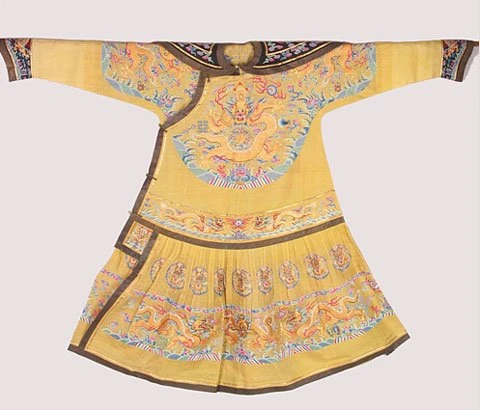
The Chaofu shown in the picture, now collected in the Shenyang Palace Museum
Jifu (吉服): Between Chaofu and Changfu, it consists of two pieces, a flat-sleeved, Duijin short top, and a horseshoe sleeve robe. The Jifu style is similar to the Changfu, but with ornate decorations, it can be considered as an ornate version of Changfu, mainly used in the auxiliary phase of liturgical occasions such as festivals.
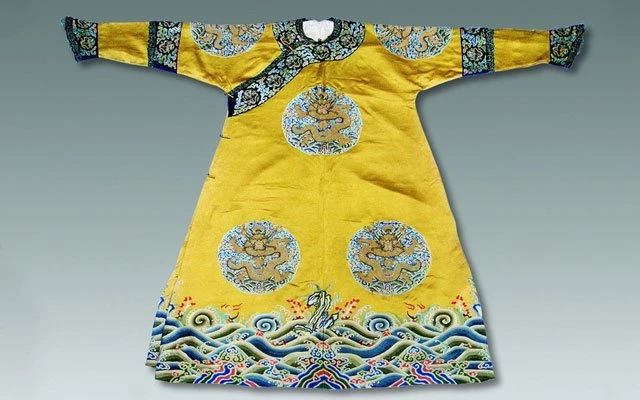
Jifu
Changfu (常服, for daily): Changfu is generally lime green (nearly black) or blue, no pattern or only dark pattern; Changfu robe color is not restricted, but most are also concentrated in blue and brown and another more sedate color system, no edging.
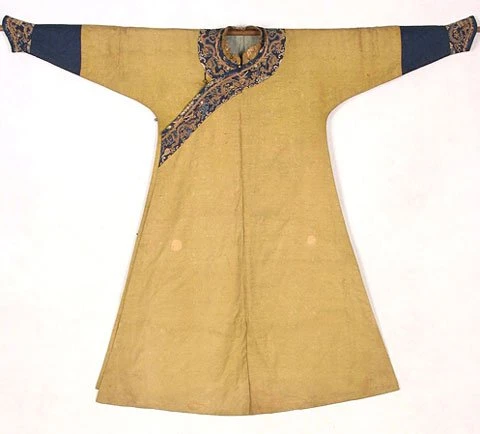
The Changfu shown in the picture, now collected in the Shenyang Palace Museum
Bianfu (便服, casual clothing): the most everyday casual wear. The biggest difference between Bianfu and Changfu is the absence of horseshoe sleeves, the increasingly wide cuffs, and the absence of outer top. Often have a wide variety of patterns because of no formal requirements.
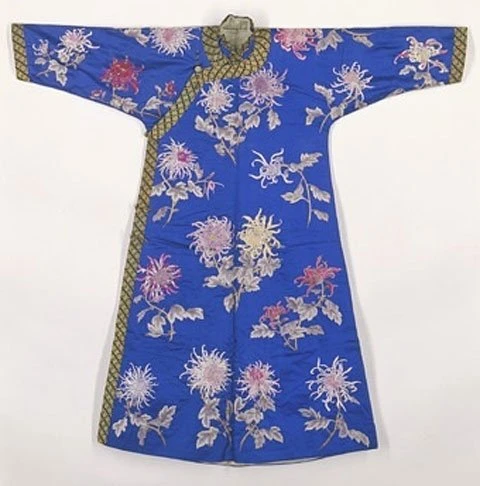
Bianfu
Dress of the empress and emperor in the Qing dynasty
Chaofu
The Emperor's Chaofu and the crown were divided into two types: winter and summer, the difference is mainly in the edges of the clothes, satin in spring and summer, and precious furs in autumn and winter.
Its basic styles are Pi collar & robe skirt. The lower garment has Biji (襞积①, folds on ancient robes.) where it meets the upper garment, the right side has a square Ren (衽②) and the waist has Yaowei (腰帏). And the Pi collar (③) and arrow sleeves (④ ) were prominent features of the Qing dynasty's Chaofu.
The colors are mainly yellow, and the patterns are mainly dragon and twelve Wenzhang (twelve patterns representing different symbolic meanings). The Chaofu is the formal dress worn by the emperor during major ceremonies, such as his accession to the throne, the Great Wedding, the Ten Thousandth Birthday Festival, the New Year's Day, the Winter Solstice.
Dragon Robe
The emperor's dragon robe belongs to the category of Jifu, which is slightly inferior to the formal dresses such as the Chaofu and is worn mainly in normal times. When wearing the dragon robe, the corresponding crown and accessories must be worn at the same time. The dragon robe to bright yellow, but also available in golden yellow, apricot yellow.
In ancient times, the emperor was known as the Ninth Five Zhi Zun (九五之尊, refers to the exalted status of the emperor). The numbers nine and five, often symbolizing nobility, are reflected in royal architecture, living implements, etc.
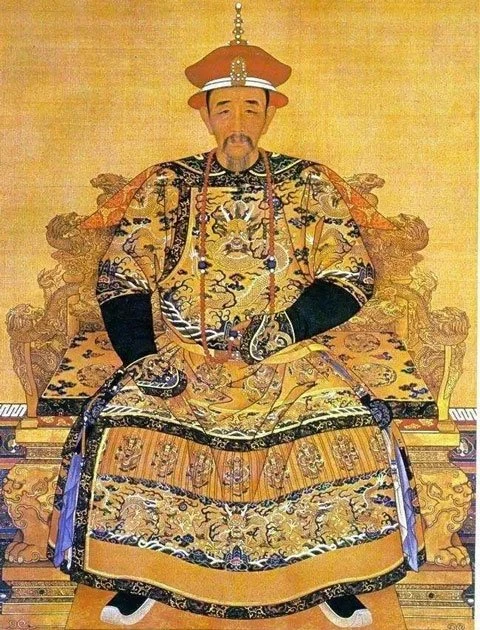
Emperor of Qing Dynasty--Kangxi (康熙)
The Emperor's dragon robe of the Qing Dynasty, according to the literature, was also embroidered with nine dragons. In-kind, there are only eight dragons, which does not match the written record, and one dragon is missing.
Some think there is another dragon, the Emperor himself. In fact, this dragon exists objectively, just embroidered on the inside of clothes, generally not easy to see.
Phoenix robe
The style of the empress's clothing is essentially similar to that of a Manchu noblewoman. The crew neck, sleeves, and placket edges, all decorated with wide lace, just with different patterns.
The pattern of the garment shown here is phoenix through peony. The entire costume is embroidered with eight colored phoenixes on bright blue satin, with several peonies interspersed between them.
The peony's colors are pure and elegant, with subtle color variations, which are characteristic of traditional landscape painting. In contrast, the phoenix is more intense in color and has extremely strong contrast, with typical ethnic style and period characteristics.
Dress of official in the Qing Dynasty
The main varieties of Qing Dynasty official clothing are long robes & Magua (马褂, top). The name of the Magua comes from the short clothes worn when riding a horse.
It is characterized by a front and back slit and a square Buzi on the chest. The bird and animal motifs and hierarchical order of Buzi are much the same as in the Ming Dynasty.
The Qing dynasty official hat was very different from the previous dynasty, the sergeant, the military and political officers above the officer wore a Wei hat (纬帽) like a bucket hat. There are warm hats and cool hats according to the winter and summer seasons.
According to the grade, it matched different colors and textures Dingzi (顶子, a bunch of peacock plumes).
The emperor sometimes gave "yellow Magua" to officials as a sign of special favor. Other colors of Magua became popular among officials and gentlemen and became a common formal dress.
Fourth, fifth-grade officials also hang the Chaozhu (朝珠), made of a variety of valuable jewelry and incense wood, constituting another feature of the Qing Dynasty official uniforms.
The progress of silk spinning, embroidery, dyeing, and various handicraft professions created the conditions for a rich variety of Qing dynasty clothing, forming the characteristic that the cumbersome decoration of showing off one's wealth was more important than artistic expression.
The Qing dynasty men's clothing
Male clothing in the Qing Dynasty mainly included: long robes, Magua, Ao, shirts, pants, etc. The main items of clothing are long robes and Magua.
Long robes: The robe is simple in shape, straight collar, large placket, seams in front and back. The civilian wears a robe with or without slits on the left and right sides. In the Manchu period, the outside of the robe was just below the knee length and the sleeves were wide and short.
The jewelry on clothes the is more trivial, can hang dozens of small things, such as ear diggers, tweezers, toothpicks, and some small models of ancient weapons, such as halberds, guns, and so on, wearing ornaments in the Qing Dynasty has formed a fashion.
Magua: Men's Magua is the most representative, Magua for external use, there are single, clip, cotton several different practices, generally using cyanosis, black, and other vegetal colors, customary not use bright yarn raw materials.
There are different kinds of Magua with long and short sleeves, but the sleeves of both long and short are wide and fat. "The yellow Magua was the finest labcoat of the Qing Dynasty clothing, which was the highest reward of the Emperor.
The Qing dynasty women's clothing
Women's clothing in the Qing Dynasty, Han, and Manchu development is different.
Han women also kept the Ming style during the Kangxi and Yongzheng periods, with small sleeves and long skirts in fashion.
After the Qianlong period, the clothes became fatter and shorter, the cuffs became wider, and Yunjian was added, giving rise to many new styles. By the late Qing, women were predominantly wearing pants.
Manchu women wear "Qi dress (旗装)" and "flower pot bottom" Qi shoes. As for the cheongsam, which was passed down through the generations, it was long used mainly for the court and royal family.
In the late Qing Dynasty, the cheongsam was also imitated by the noblewomen of the Han. More about cheongsam: What is cheongsam?
There are many kinds of Qing dynasty clothing, as can be seen from the various kinds of unearthed cultural relics, exquisite and beautiful, bringing together the essence of China's thousands of years of cloth craft and embroidery techniques, together with the unique cultural connotation, with its unique beauty to form an important part of Chinese cultural and artistic treasures.
More about Chinese traditional clothing:
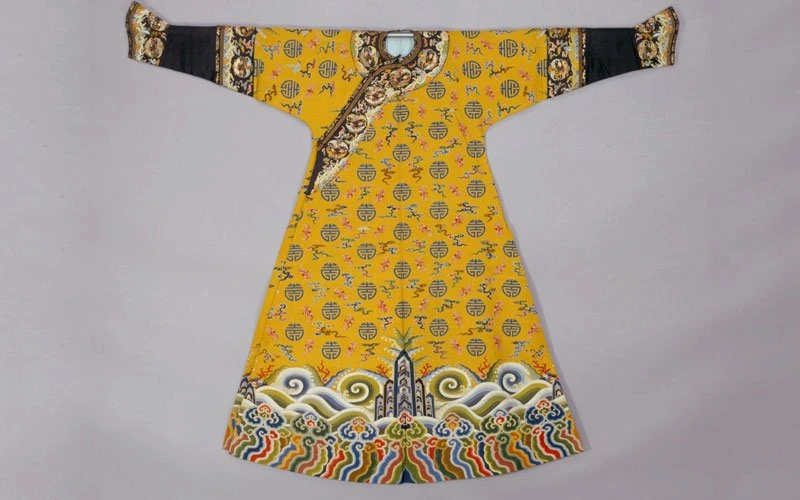


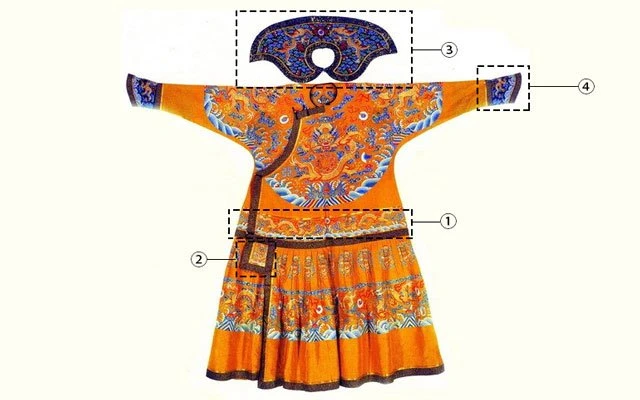
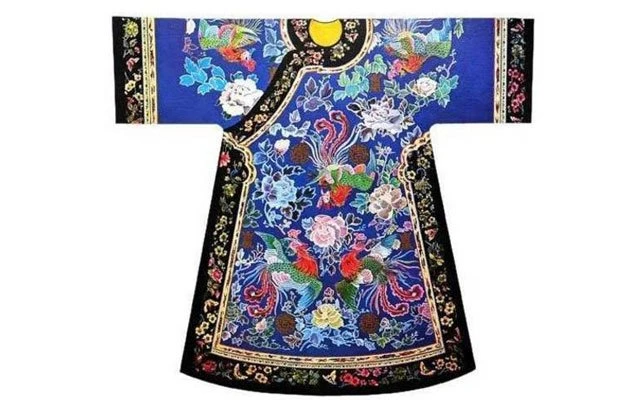

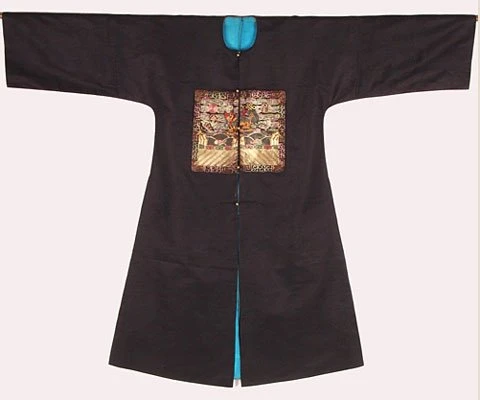
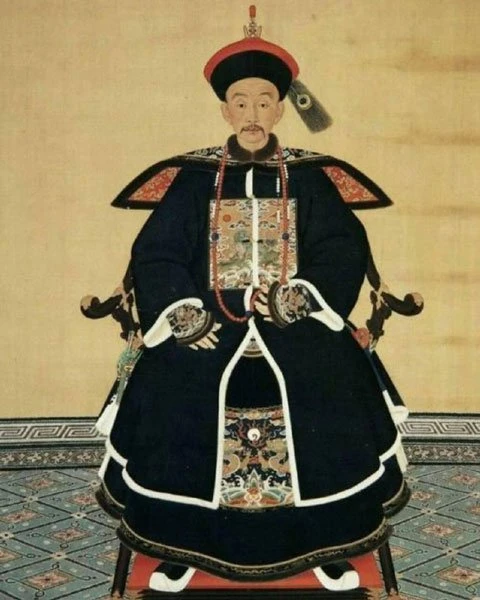

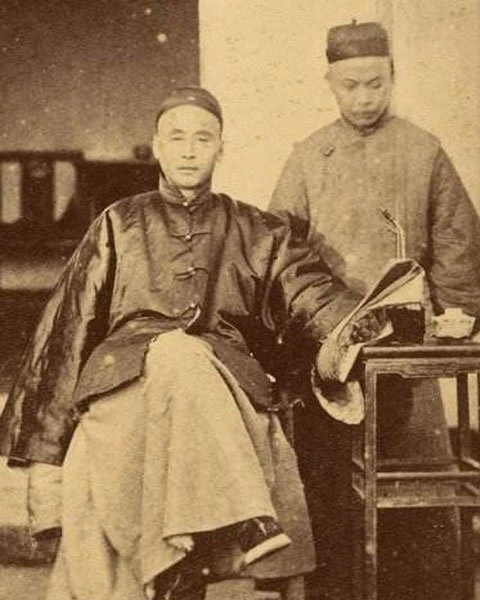
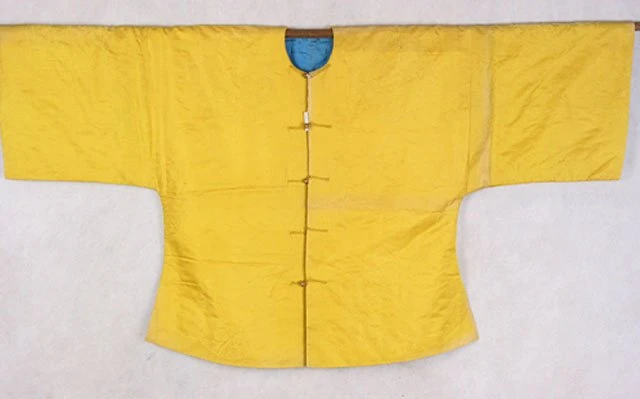

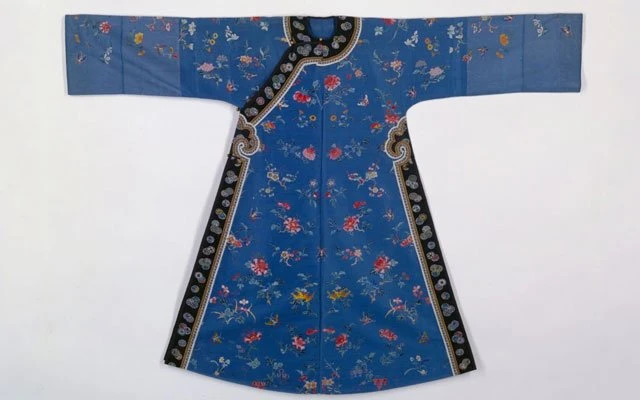
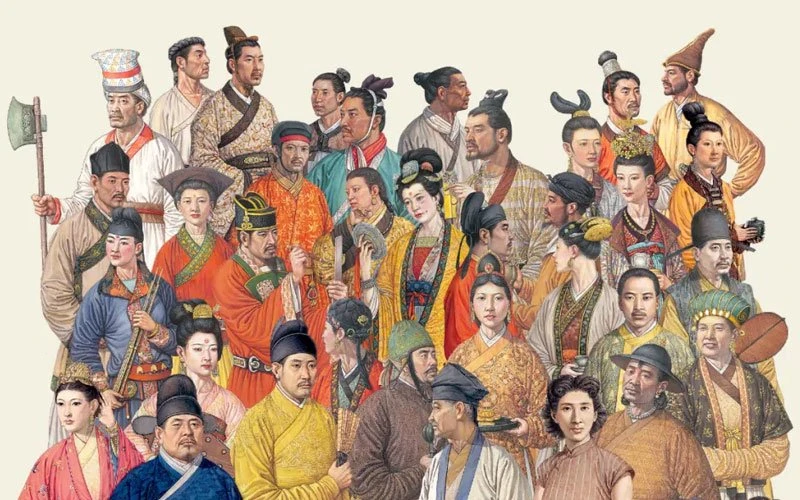

Jadi lebih tau tentang hanfu
As a dominative nationality in Qing Dynasty, their costume has quite an effect on the development of China's costume.